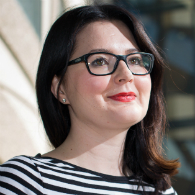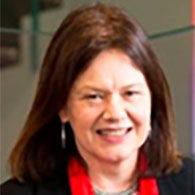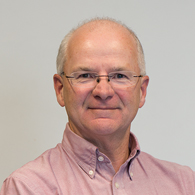Stroke

What is a stroke?
Stroke attacks the brain – our most vital organ. A stroke occurs when blood supply to the brain is cut off because of a clot blocking an artery (ischaemic stroke), or due to a burst artery (haemorrhagic stroke).
When blood is stopped, the brain cannot get the oxygen it needs, brain cells in the area die and the brain can become permanently damaged. Every stroke is different depending on where in the brain it strikes and how severe it is. What is common is the devastation it can cause to the person with lived experience of stroke, their family and friends.
Facial weakness, arm weakness and difficulty with speech are the most common symptoms or signs of stroke. A stroke is always a medical emergency. If you suspect you or someone else is having a stroke you should call 000. The longer a stroke remains untreated, the greater the chance of stroke-related brain damage.
Stroke is Australia's second single greatest killer after coronary heart disease and a leading cause of disability. In 2020, more than 27,000 Australians experienced stroke for the first time. Tasmania has one of the highest incidences of stroke per capita in Australia. A stroke can affect anyone at any age. In 2020, 24 percent of first-ever stroke occurred in people aged 54 years and under. Men are at greater risk than women, but women tend to have more severe stroke and recover less than men. As we get older our risk of stroke increases. However, more than 80 percent of strokes are preventable. Managing the risk factors for stroke by living a healthy lifestyle can help prevent you from having a stroke. Some causes within our control include high blood pressure, being overweight, smoking, high cholesterol, a high intake of alcohol and diabetes.
Information courtesy of the Stroke Foundation
Synergies TO Prevent stroke – STOPstroke
While a lot of risk factors for stroke are known, there remain substantial gaps in knowledge around preventing stroke. STOPstroke is funded by a National Health and Medical Research Council Synergy grant and aims to address those gaps in our understanding of how to prevent stroke. The STOPstroke researchers are an interdisciplinary team, brought together by a combined desire to make major advances in preventing stroke.
Building on previous and current efforts, STOPstroke has three main themes of work:
Theme 1: Better identification of those who will suffer stroke
Theme 2: Improved management of people at risk of stroke
Theme 3: Real-world modelling and effectiveness of stroke prevention
Our people

CIA – Associate Professor Seana Gall, University of Tasmania
Epidemiologist and leader of the Cardiovascular and Respiratory Health and Disease theme at the Menzies Institute for Medical Research.

CIB – Professor Amanda Thrift, Monash University
Head of Epidemiology and Prevention Disease at the Stroke and Ageing Research (STAR) Group. Internationally renowned for her expertise in the epidemiology of stroke.

CIC – Associate Professor Judith Katzenellenbogen, University of Western Australia
Cardiovascular epidemiologist who leads Aboriginal heart disease and stroke research within the School of Population and Global Health.

CID – Professor Mark Nelson, University of Tasmania
Head of General Practice, clinician and researcher focusing on the diseases of ageing and what can be done to prevent them.

CIE – Professor Timothy Kleinig, Royal Adelaide Hospital
Head of Neurology at Royal Adelaide Hospital and Clinical Associate Professor at University of Adelaide. Leader in driving improvements in the quality of stroke care in South Australia.

CIF – Professor Valery Feigin, Auckland University of Technology
Director of AUT’s National Institute for Stroke and Applied Neuroscience (NISAN), an institute dedicated to studying the epidemiology and prevention of neurological disorders.

CIG – Professor Dominique Cadilhac, Monash University
Head of Translational Public Health Research Division at the Stroke and Ageing Research (STAR) Group. Data custodian for the Australian Stroke Clinical Registry (AuSCR).

CIH – Associate Professor Lee Nedkoff, University of Western Australia
Cardiovascular epidemiologist with a focus on developing methods for population-level disease monitoring and identifying population groups where adverse trends are present.

CII – Dr Joosup Kim, Monash University
Postdoctoral Research Fellow at the Stroke and Ageing Research (STAR) Group. Primary research interests in epidemiology, health services research and health economics.

CIJ – Associate Professor Monique Kilkenny, Monash University
Health services researcher and experience epidemiologist who Heads the National Stroke Data Linkage Program at Monash University.
Supporting the STOPstroke program are four Associate Investigators: Brenda Booth (person with lived experience of stroke), Angela dos Santos (Indigenous Neurologist), Tara Purvis (early career researcher) and Marie-Jeanne Buscot (early career researcher).
STOPstroke Advisory Committee
Providing program oversight and guidance to assist STOPstroke maximise impact and develop capacity and capability across the program is the STOPstroke Advisory Committee. Chaired by Dr Eleanor Horton (caregiver for a person with lived experience of stroke), the Advisory Committee has diversity of gender, ethnicity and geographic location and expertise across laboratory, population health and clinical advocacy.
Our Research
Clinical Trials
Commencing in mid-2021, STOPstroke is seeking participants for its PERsonalised Knowledge to reduce the risk of Stroke (PERKS International) clinical trial. If you are aged between 35 and 75 and can attend one of our clinics in Hobart, Adelaide, or Melbourne in Australia; Auckland or Hamilton in New Zealand, please read more about the eligibility requirements for this clinical trial that will investigate two different ways of providing people information about their stroke risk factors.
Community consultation - Preventing Stroke Research Priorities Project
Between September and November 2021 we asked the community what questions they have about preventing stroke. The first STOPstroke survey collected over 750 questions. We are now analysing those questions as part of the Preventing Stroke Research Priorities Project. In early 2022 we will ask the community to participate in the second STOPstroke survey to help us to prioritise the questions. Your feedback will help us to ensure our research addresses the questions that matter about preventing stroke.
Work with us
STOPstroke is seeking a Project Administrator to support the development of a Australian First Nations Data Stream for Stroke. This project aims to develop a governance structure/process and program of Indigenous-led research aimed at preventing/monitoring stroke, and improving care and outcomes following stroke. The role can be based in Victoria, Western Australia or New South Wales. See the Position Description for more information.
Contact us
Christine Farmer
Program Manager
christine.farmer@utas.edu.au
+61 3 6226 7718
Acknowledgements
STOPstroke is funded by NHMRC Synergy Grant (GNT1182071)
STOPstroke recognises, respects and acknowledges Aboriginal people past, present and future, as the traditional custodians of country in Australia
PERsonalised Knowledge to reduce the risk of Stroke (PERKS International)
Did you know that 1 in 4 people will have a stroke in their lifetime? Knowing your risk factors for stroke may help you to prevent stroke.
The PERsonalised Knowledge to reduce the risk of Stroke (PERKS) clinical trial compares two different ways of showing people their risk factors for stroke. We will test whether one method is better than the other at helping people to manage their stroke risk factors. Stroke risk factors are things like blood pressure, exercise and diet.
The first step is a short online questionnaire to check if you can participate in the study.
If you are eligible and agree to participate, you will be assigned to one of two groups and receive information on your risk factors for stroke. The method used to provide information about how you could change these risk factors will depend on which group you are in.
Who can participate?
You may be eligible if you:
- Are aged 35 to 75
- Have at least two risk factors for stroke (but not had a stroke or heart attack)
- Have a smartphone
- Can travel to a clinic for a health-check two times during the study (clinics are in Hobart, Adelaide, and Melbourne in Australia; and Auckland and Hamilton in New Zealand)
- Do not have any problems with memory or thinking
Over 12 months we would like you to:
- Do an online questionnaire and face-to-face health check at the start of the study (60 minutes)
- Do an online questionnaire at 3, 6 and 12 months (30 minutes each)
- Attend a face-to-face health check at 6 months (30 minutes)
If needed, your parking and travel costs can be refunded.
For more information about participating in the study, please visit the StopStroke Survey page.
You can download the Participant Information Sheet for Australia or New Zealand, or watch a video describing the study.